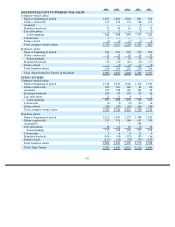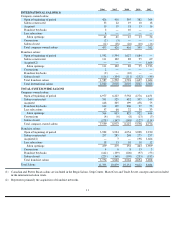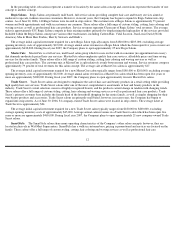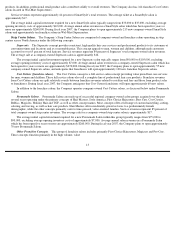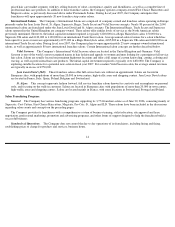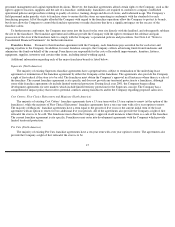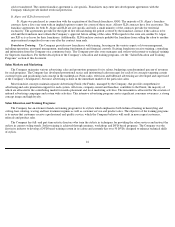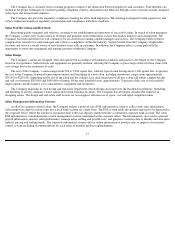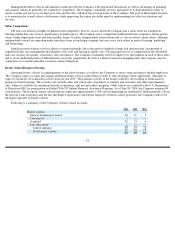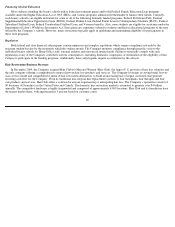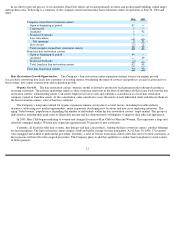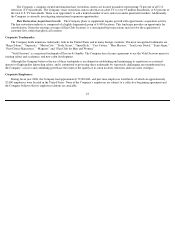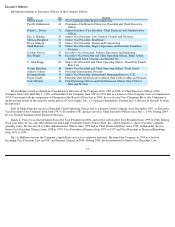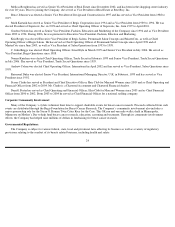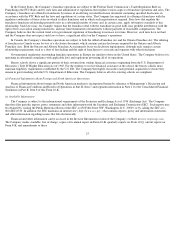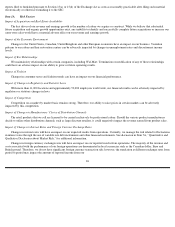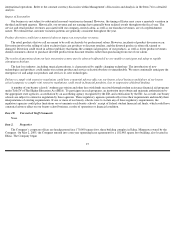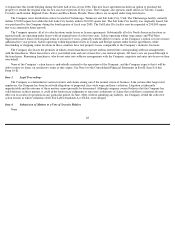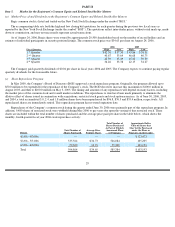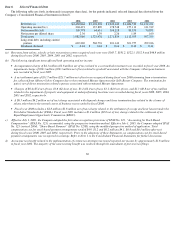Supercuts 2006 Annual Report Download - page 21
Download and view the complete annual report
Please find page 21 of the 2006 Supercuts annual report below. You can navigate through the pages in the report by either clicking on the pages listed below, or by using the keyword search tool below to find specific information within the annual report.
Financing Student Education
Most students attending the beauty schools utilize federal government grants and/or the Federal Family Education Loan programs
available under the Higher Education Act of 1965 (HEA), and various programs administered thereunder to finance their tuition. Currently,
each beauty school is an eligible institution for some or all of the following federally funded programs: Federal Pell Grant (Pell), Federal
Supplemental Education Opportunity Grant (SEOG), Federal Perkins Loan, Federal Parent Loan for Undergraduate Students (PLUS), Federal
Subsidized Stafford Loan, Federal Unsubsidized Stafford Loan, and Veterans benefits. Also, some students are eligible for assistance under the
Department of Labor’s Workforce Investment Act. State grants are sometimes offered to students enrolled in educational programs of the type
offered by the Company’s schools. However, many restrictions typically apply in qualifying and maintaining eligibility for participation in
these state programs.
Regulation
Both federal and state financial aid programs contain numerous and complex regulations which require compliance not only by the
recipient student but also by the institution which the student attends. The Company monitors compliance through periodic visits to the
individual beauty schools by Home Office staff, external auditors and outsourced internal audit. Failure to materially comply with such
regulations at any of the Campuses could have serious consequences, including limitation, suspension, or termination of the eligibility of that
Campus to participate in the funding programs. Additionally, these aid programs require accreditation by the schools.
Hair Restoration Business Strategy:
In December 2004, the Company acquired Hair Club for Men and Women (Hair Club), the largest U.S. provider of hair loss solutions and
the only company offering a comprehensive menu of proven hair loss products and services. The Company leverages its strong brand, best-in-
class service model and comprehensive menu of hair restoration alternatives to build an increasing base of repeat customers that generate
recurring cash flow for the Company. From its traditional non-surgical hair replacement systems, to hair transplants, hair therapies and hair
care products and services, Hair Club offers a solution for anyone experiencing or anticipating hair loss. The Company’s operations consist of
90 locations (42 franchise) in the United States and Canada. The domestic hair restoration market is estimated to generate over $4 billion
annually. The competitive landscape is highly fragmented and comprised of approximately 4,000 locations. Hair Club and its franchisees have
the largest market share, with approximately 5 percent based on customer count.
20


